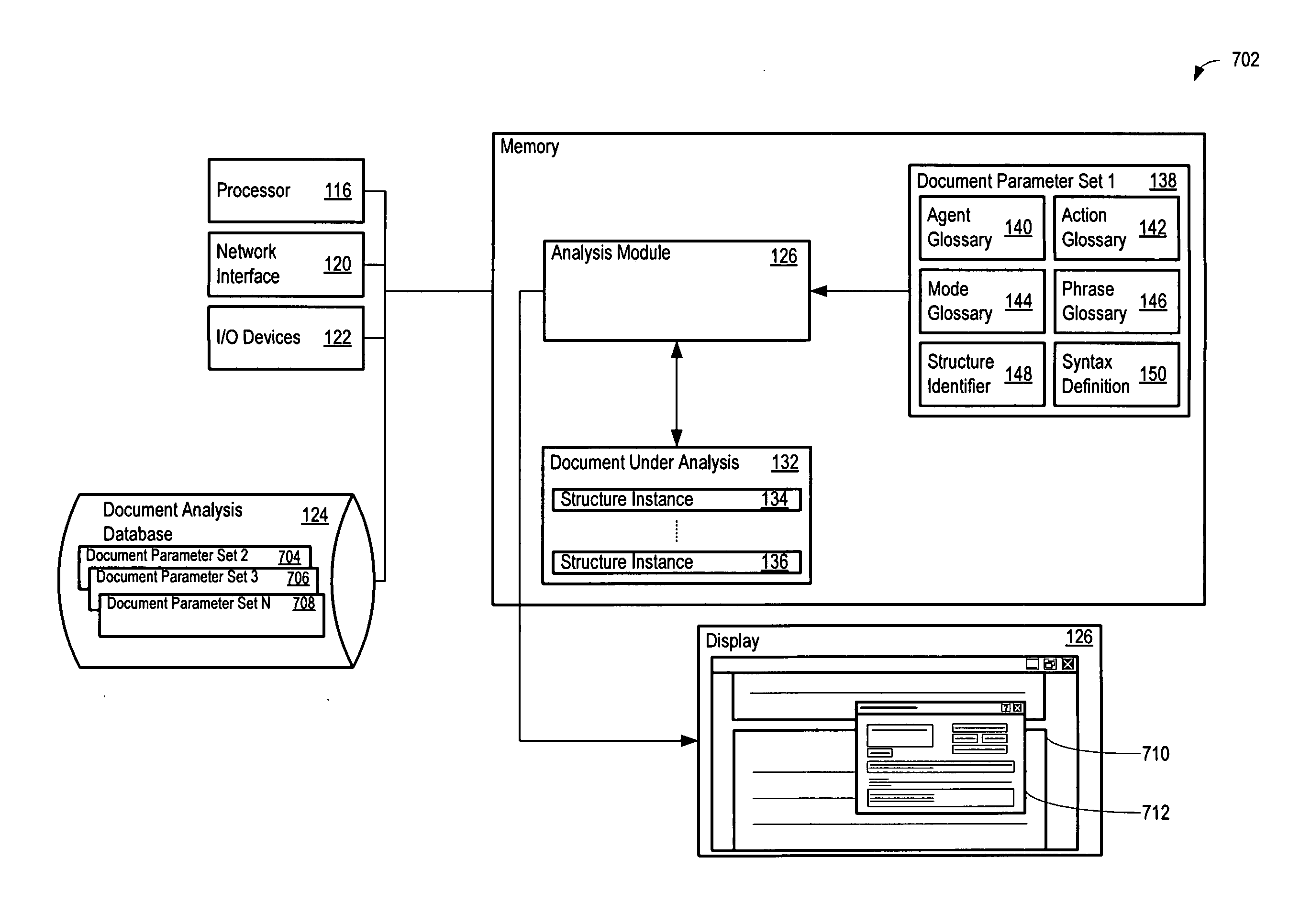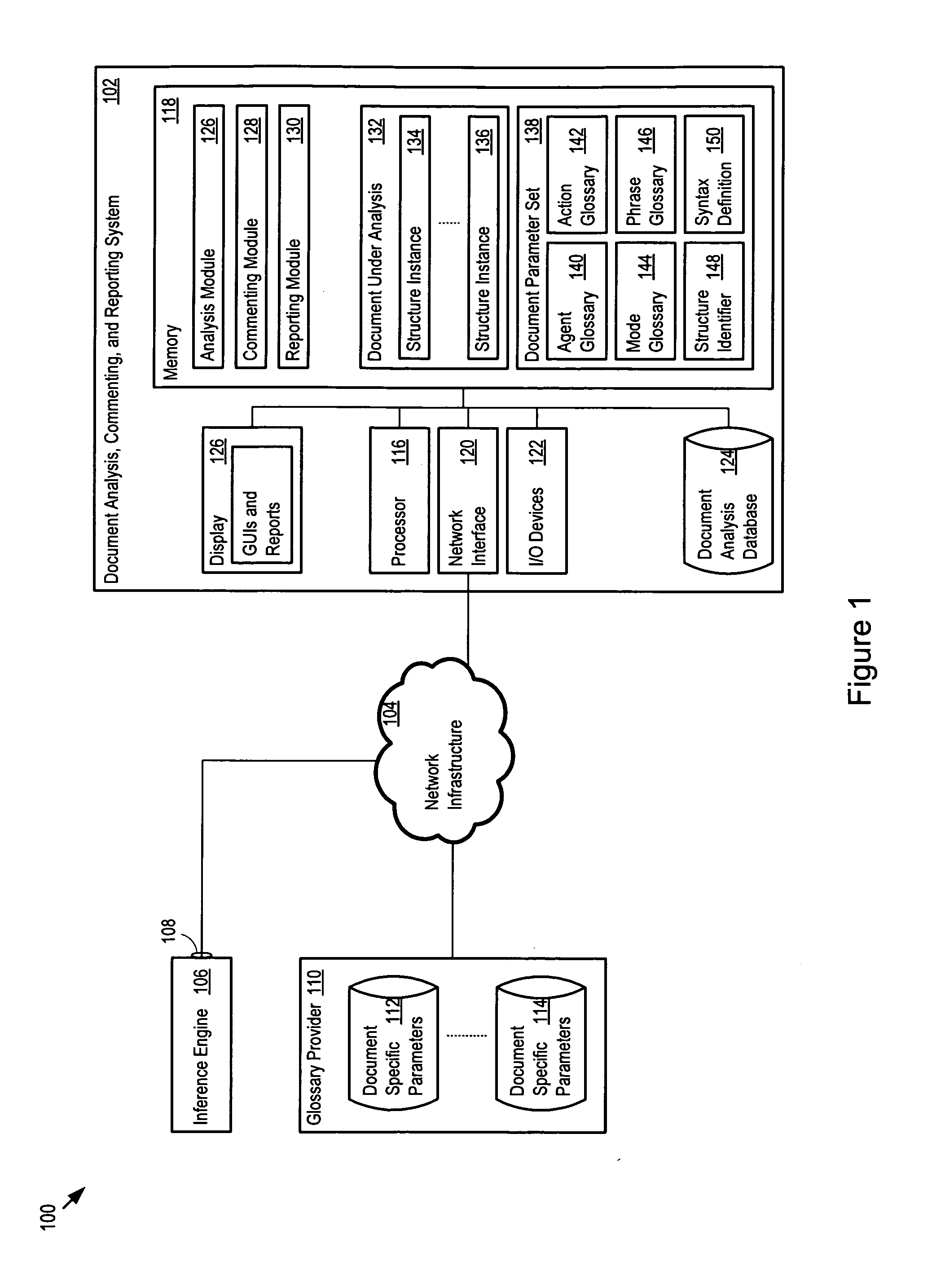Document Analysis, Commenting, and Reporting System
a document analysis and document technology, applied in the field of document analysis, can solve the problems of significant technical challenges in analyzing and providing constructive feedback on documents, and the writing skills of the typical individual have not improved at anywhere near the pace of technology, so as to avoid confusion over documents
- Summary
- Abstract
- Description
- Claims
- Application Information
AI Technical Summary
Benefits of technology
Problems solved by technology
Method used
Image
Examples
Embodiment Construction
[0042]FIG. 1 shows a network 100 including a document analysis, commenting, and reporting system 102 (“system 102”). The system 102 is connected to the network infrastructure 104. Through the network infrastructure 104, the system 102 may communicate with an inference engine 106, such as by a web services interface 108, and with other entities, such as the glossary provider 110. The system 100 may analyze a wide range of document types, with analysis tailored for the specific document type in question. In one implementation, the system 100 includes the document parameter sets that tailor analysis to any specific document type. However, in other implementations, the system 100 may receive new document parameter sets or update existing document parameters sets by coordinating with the glossary provider 110. To that end, the glossary provider 110 may maintain a database of many different document specific parameter sets, two of which are labeled 112 and 114.
[0043]The system 102 include...
PUM
 Login to View More
Login to View More Abstract
Description
Claims
Application Information
 Login to View More
Login to View More - R&D
- Intellectual Property
- Life Sciences
- Materials
- Tech Scout
- Unparalleled Data Quality
- Higher Quality Content
- 60% Fewer Hallucinations
Browse by: Latest US Patents, China's latest patents, Technical Efficacy Thesaurus, Application Domain, Technology Topic, Popular Technical Reports.
© 2025 PatSnap. All rights reserved.Legal|Privacy policy|Modern Slavery Act Transparency Statement|Sitemap|About US| Contact US: help@patsnap.com



